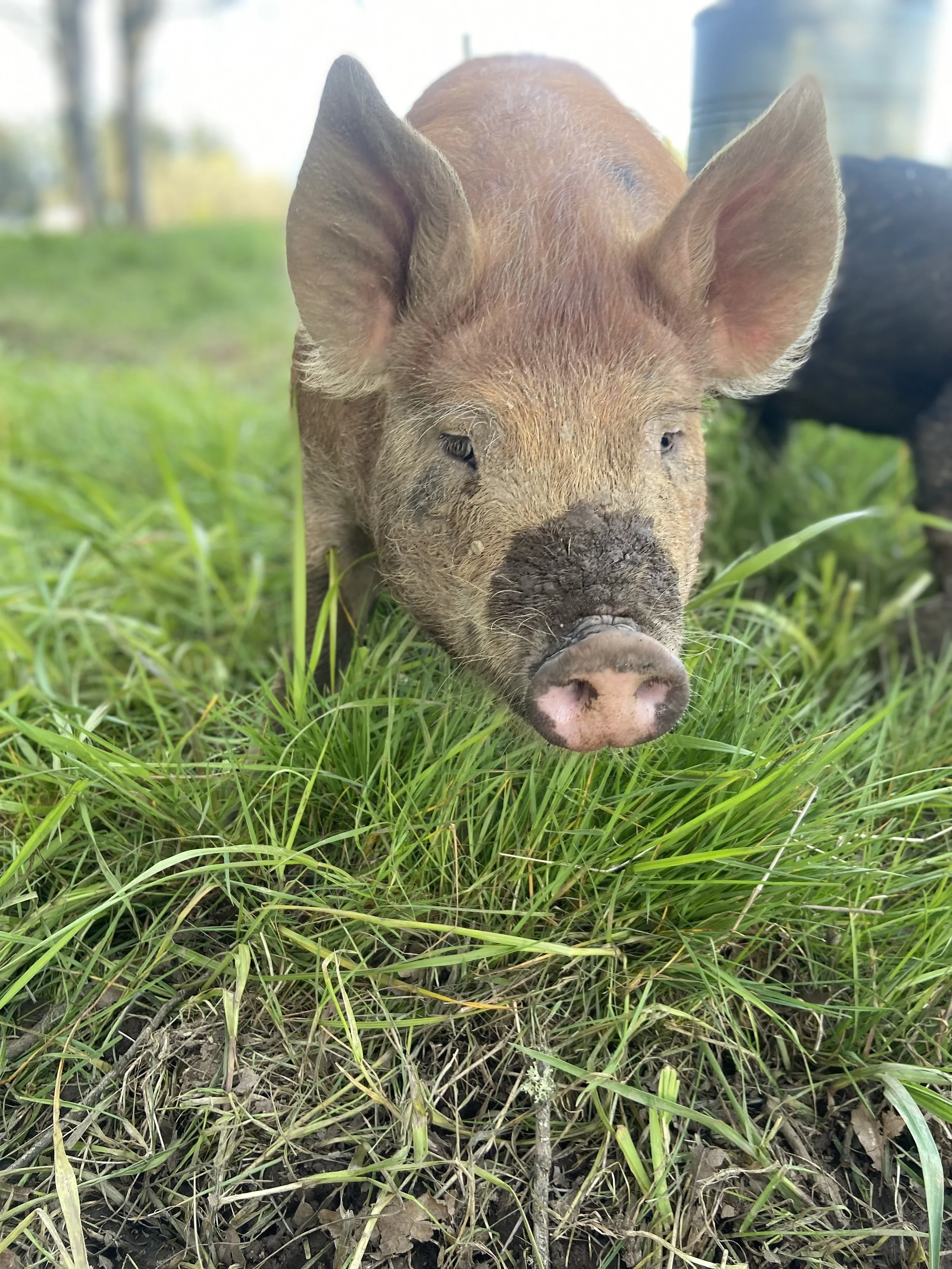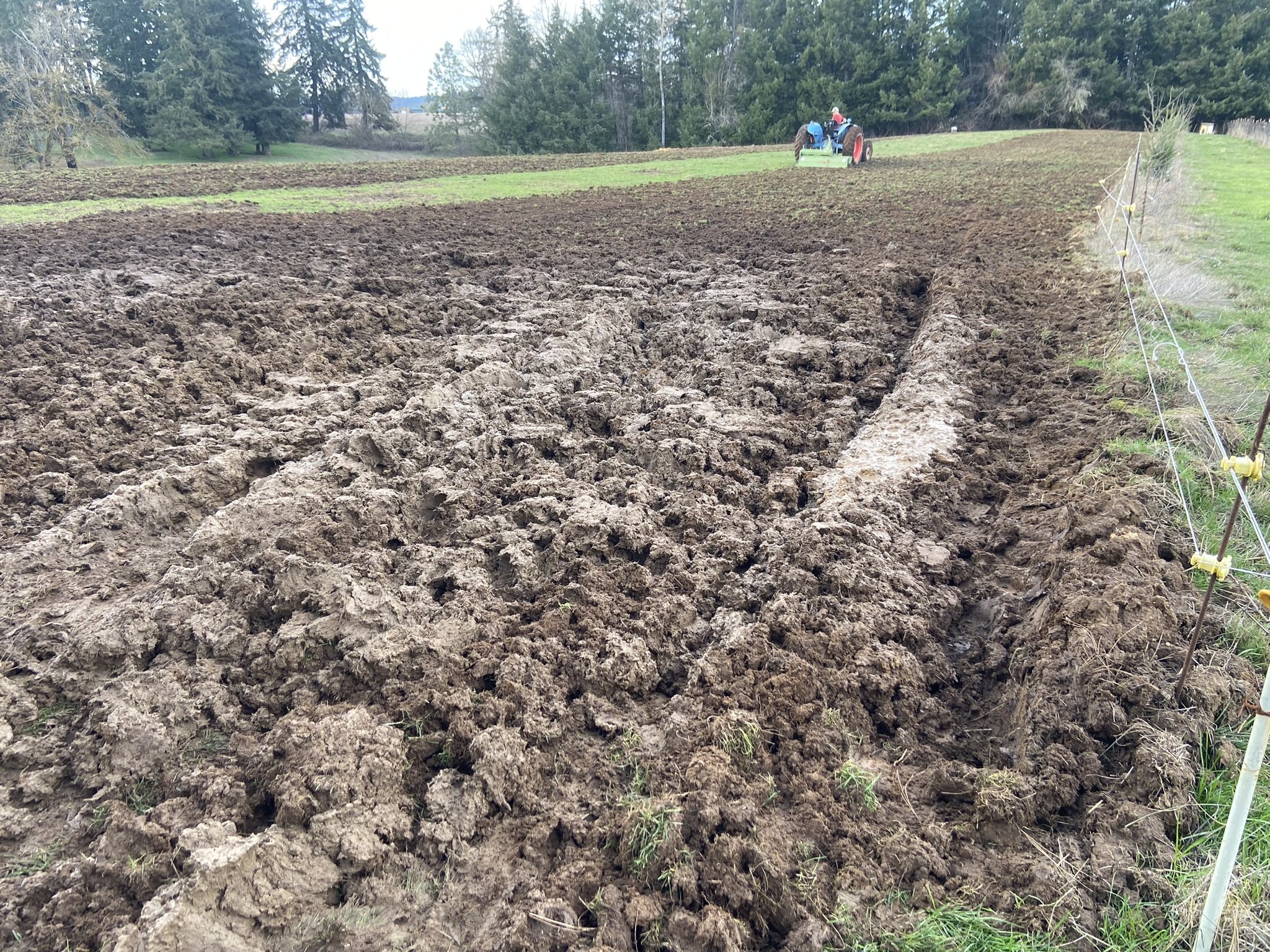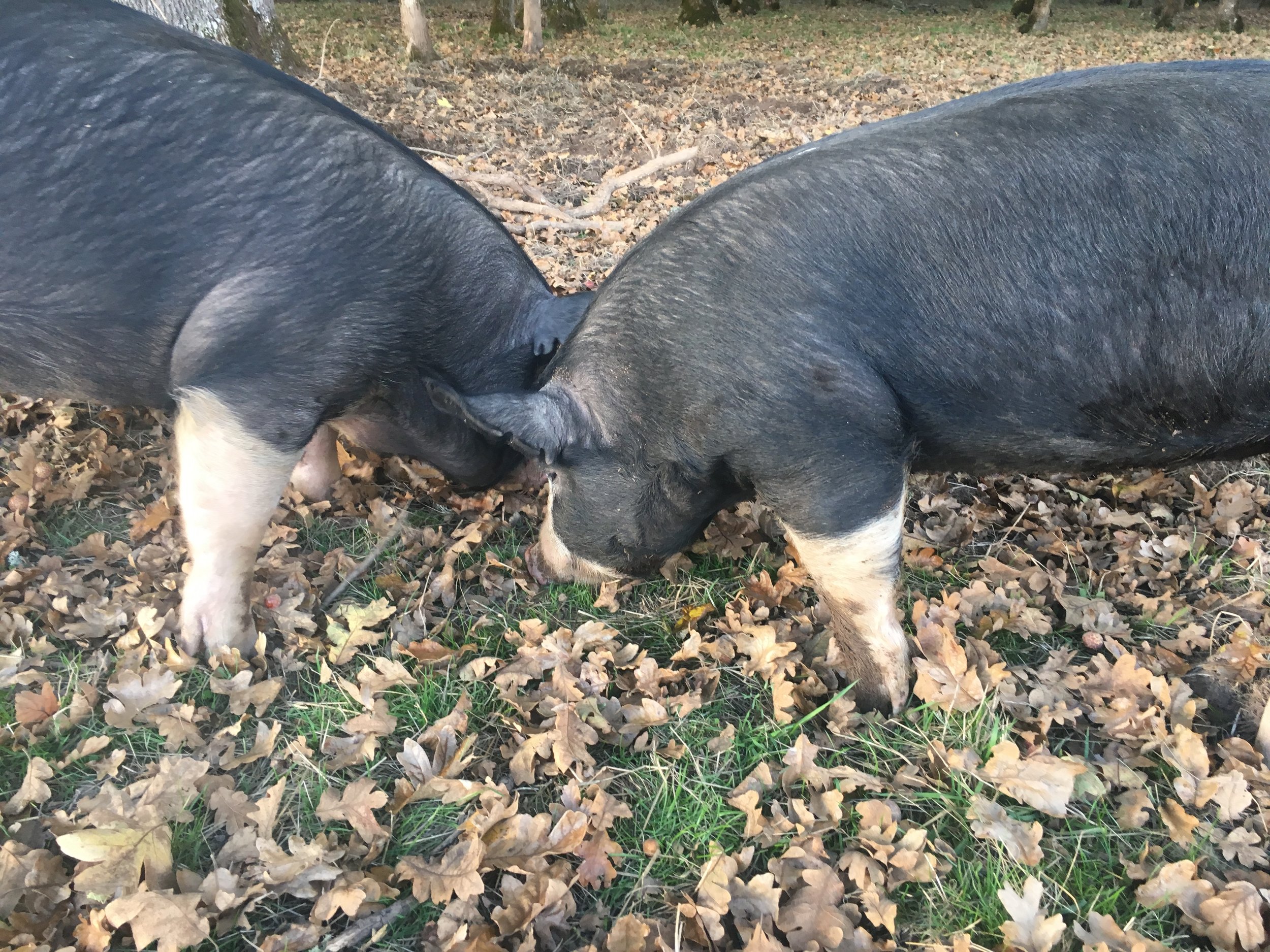Most of our pasture rehab happens in the spring, making it the perfect time to share this with you.
Pigs are natural diggers - they have a shovel on the end of their muzzle, and we love to let them use it!
October will be here before you know it, wrapping up the hog-growing cycle.
Plan ahead and snag your spot early—reserve your half or whole hog now!
The pigs love to root, turn, and till the soil with their powerful snouts, which means by the end of the season, the pasture can look like a battlefield.
But come spring, we start fresh.
The pastures and oak groves are empty since the piglets are still in the barn with their mamas.
It’s nature’s perfect time to begin the rehab process.
First, we clean up—picking up fallen branches and limbs that winter storms have scattered.
Sometimes, whole trees come down that need to be cut up and hauled away.
In summer, the pigs dig large holes that later fill with rainwater, making them nearly impossible to spot.
Here’s the tractor stuck in one of those hidden holes we accidentally drove into while spreading seed!
If the pigs have left deep holes or completely dug up the grass and its roots, we use the tractor to till gently before spreading a mix of seeds.
We rehab with grasses and legumes such as clover, triticale, oats, barley, ryegrass, peas, plantain, and vetch.
This gives the animals options and the soil a diverse ecosystem—the opposite of monoculture farming.
It’s like a salad bar for the pigs, but it also heals and nourishes the soil.
Healthy soil means healthy grass; and healthy grass means happy, well-fed pigs.
In early summer, we plant a giant pumpkin patch, knowing it will become a feast for the pigs later in the fall.
When the time comes, we let them loose to enjoy the pumpkins, which they absolutely love—crunching through the shells to get to the sweet, rich flesh inside.
Plus, the seeds act as a natural de-wormer, making this not just a treat but a healthy holistic option to using chemical de-wormers.
Why go to all this trouble?
Because I want to give you the best-tasting, highest-quality pork.
Over the years, I’ve noticed that where an animal is raised and what it eats directly affects its flavor.
Since I have a keen sense of taste and smell, I pick up on these differences easily…
I want to make sure that when you bring our pork to your table, it’s the clean, delicious, pasture-raised flavor you deserve.
That’s why we put so much care into creating a healthy, natural environment for our pigs—it’s all about giving you the very best.
By May, when the ground has dried out a bit, the pigs will be back out on pasture, roaming, munching, and doing what pigs do best.
In September, the acorns start to drop from the oak trees, and the pigs love to vacuum them up, adding a little nutty flavor to their meat.
We carefully time our piglet births and butcher to align with this natural cycle.
By October, you get to enjoy pastured pork that’s been raised exactly how nature intended.
And since our pork harvest will be here before you know it, now’s a great time to get on the waitlist for a half or whole hog.
A deposit secures your spot, so when October rolls around, you’ll have a full freezer of delicious, pastured pork.








